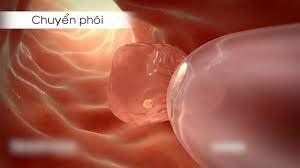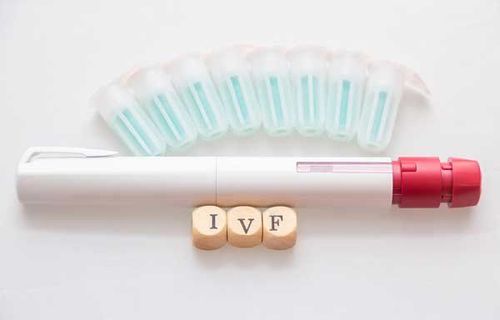This is an automatically translated article.
For couples with low fertility who need the support of artificial insemination, the method of frozen embryo transfer to speed up pregnancy is the choice of most women. a couple.1. What is frozen embryo transfer?
Frozen embryos is a term to refer to embryos that are frozen after in vitro fertilization (IVF) instead of being put into the mother's body. Frozen embryo transfer is performed after a fresh embryo transfer cycle has failed or for some reason fresh embryos cannot be transferred.
There are many reasons for postponing fresh embryo transfer, freezing whole embryos, to transfer cryopreserved embryos later. Common reasons such as: risk of ovarian hyperstimulation, thin endometrium, fibroid uterus can affect the implantation of the embryo (embryo cannot adhere to the uterine cavity)...
Before transferring frozen embryos, it is necessary to ensure a number of factors such as: the uterine cavity is normal, if there are many fibroids, surgery can be performed to remove the fibroids before embryo transfer. The most important step in the cryopreserved embryo transfer cycle is the preparation of the endometrium, ensuring that the endometrium is of sufficient thickness and of good quality, to create the most favorable conditions for implantation and development of the embryo. embryos after placement in the uterus.
After seeing that the endometrium is thick enough, doctors will supplement progesterone and set an embryo transfer date in accordance with a favorable time for the embryo to attach to the uterus and develop. The duration of progesterone use depends on the stage of the embryo being transferred. Eg:

Cần bổ sung progesterone khi nội mạc tử cung đã đủ độ dày cần thiết
If embryos are cryopreserved on day 2, progesterone should be used 2 days before embryo transfer. If embryos are cryopreserved on day 3, progesterone should be used 3 days before embryo transfer. When the endometrium is well prepared, the success rate depends on the quality and quantity of embryos after thawing. The success rate of cryopreserved embryo transfer is often lower than that of fresh embryo transfer, but some studies have shown that there is not much difference. Babies born from cryopreserved embryos are completely normal such as fresh embryo transfer or natural birth.
The current trend favors frozen embryo transfer over fresh embryo transfer because of the following advantages:
Frozen embryo transfer is more beneficial in cases where the woman's body has not recovered due to fear and anxiety. After the oocyte retrieval process, the psychology is not stable... In cases where the patient is at risk or has ovarian hyperstimulation, uterine fluid, Progesterone test on trigger day > 1.5 ng/ml... is not You can transfer fresh embryos but have to transfer frozen embryos. Embryo freezing will help families have the opportunity to transfer embryos many times with residual embryos, thereby increasing the cumulative pregnancy rate after embryo transfers. The technique of storing embryos helps to save treatment costs, limit the number of times of ovarian stimulation to help ensure better health for women. Frozen embryo transfer also helps couples have more time to prepare for work, family life, money... When transferring frozen embryos, you will only need to prepare the endometrium to facilitate the adjustment. optimal conditions for the endometrium to accept embryos for implantation.
2. Embryo transfer process
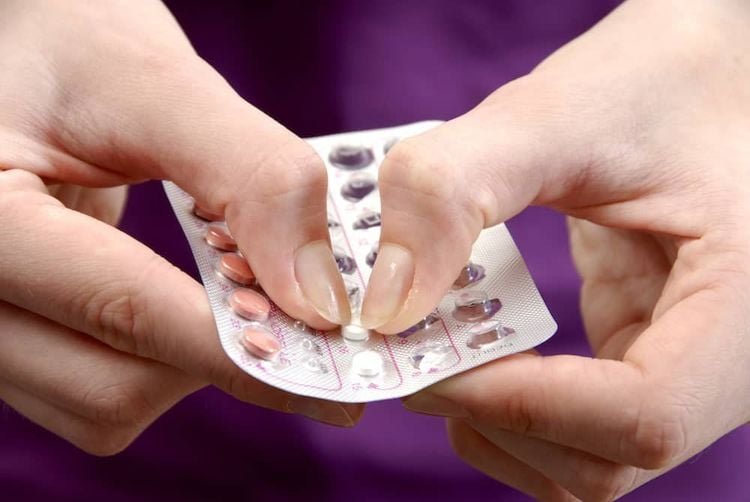
Thuốc Estrogen
There are different methods to prepare the uterine lining during the embryo transfer cycle. On a case-by-case basis, the doctor will choose the most appropriate method for the patient. Among the treatment methods, the most common is the use of exogenous hormones. This method is easy to implement, low cost, and highly effective.
A basic embryo transfer cycle is done as follows:
Step 1: Using Estrogen
Estrogen will be used from the 2nd or 3rd day of the cycle. Can be used as oral, vaginal, intramuscular or transdermal. The most common is the pill form. Estrogen stimulates the growth of the uterine lining and inhibits natural ovulation. Use before embryo transfer about 2-3 weeks on average. Patients will be scheduled for an ultrasound check after 6-7 days of use and an ultrasound to monitor the mucosa every 3-5 days depending on the growth of the uterine lining. Step 2: Using Progesterone
Progesterone will be indicated for use when the endometrium reaches the appropriate thickness and image. Can be used orally, injected or vaginally. Vaginal insertion is recommended as this will have a direct effect on the uterus. Progesterone will create the appropriate hormone for the implantation of the embryo. Use 2-5 days before embryo transfer depending on the stage of embryo storage.
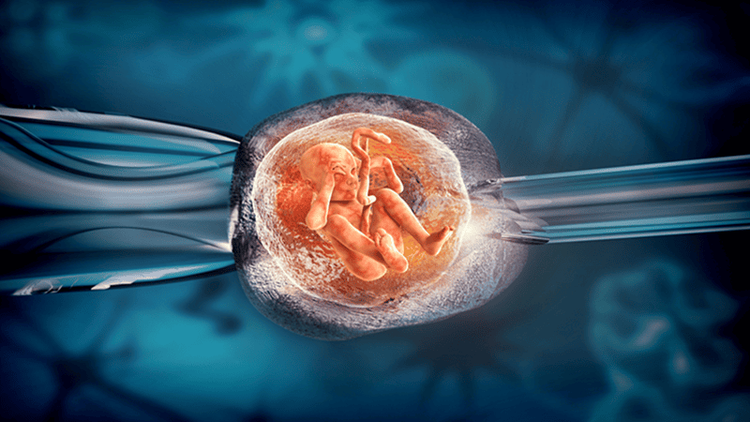
Chuyển phôi thai
Step 3: Thawing Embryos
On the day of embryo transfer (which has been informed by the doctor in advance), the embryos will be defrosted. The number of thawed embryos will be considered to ensure the highest success rate and lowest risk of multiple pregnancy. Step 4: Embryo transfer
Before embryo transfer, the patient still eats normally. Embryo transfer is a gentle procedure, with the patient fully awake during the embryo transfer. Patients can lie down for 30-60 minutes after embryo transfer. Step 5: After embryo transfer
The patient will be guided by the medical staff to take drugs and place drugs (estrogen and progesterone). Patients should walk and live as normal, should not lie motionless because it will reduce the pregnancy rate and increase the risk of venous thrombosis. Step 6: Pregnancy test
The patient will take a pregnancy test at 12-14 days after embryo transfer. A pregnancy test is a beta-hCG test to determine if you are pregnant. In some cases, there may be light bleeding before the day of the pregnancy test. At that time, it is necessary to contact the treating doctor immediately and still perform a beta-hCG test because it is still possible to become pregnant.
3. Does long-term frozen embryos affect quality?
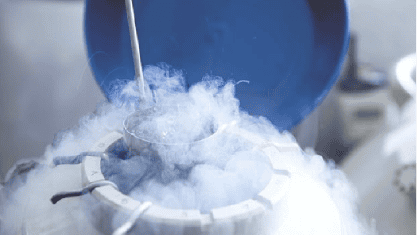
Hình ảnh phôi được đông lạnh ngay lập tức sau khi thụ tinh
There is no evidence that embryo quality will be affected after long periods of freezing. Any damage that occurs, if any, will occur during the cooling of the embryos to freezing or during the warming of the embryos to body temperature.
After eggs are fertilized, eggs can be grown in laboratory culture for 5 to 6 days. Embryo freezing can be performed during all stages of embryo development. There are no clear studies that indicate which stage is the best for embryo freezing.
If the embryo is frozen immediately after fertilization (pre-nucleation stage), the viability of the embryo after thawing will be very high. However, because embryos that were not originally cultured in a laboratory cannot be predicted for embryo viability, when embryos are thawed, embryos must be cultured in the laboratory as usual. Since it is impossible to predict how many embryos after thawing will develop well, more frozen embryos will need to be defrosted than needed.
In addition, the physical effects of embryo freezing and thawing can help remove poor quality embryos and only allow good embryos to survive.
With the above information, infertile couples can easily conceive after frozen embryo transfer. Hopefully these shares will be of great help to those who are planning to implement this modern and effective method of artificial insemination.
Established in November 2014, up to now, Vinmec IVF fertility center has performed fertility support for over 1000 infertile couples with a success rate of over 40%. This rate is equivalent to developed countries such as the UK, USA, Australia,...
The center gathers a team of leading experts in the field of obstetrics and gynecology nationally and internationally, trained in centers leading in the world such as in the US, Singapore, Japan, Australia and famous fertility centers in the world.
With a high level of expertise and extensive experience, Vinmec IVF Center's experts are capable of synchronously and comprehensively deploying the most advanced assisted reproductive techniques today, helping realize the dream of becoming a parent of hundreds of families across Vietnam.
You can directly go to Vinmec IVF Fertility Center for advice by specialist doctors or contact 024 3974 3556 for support.






